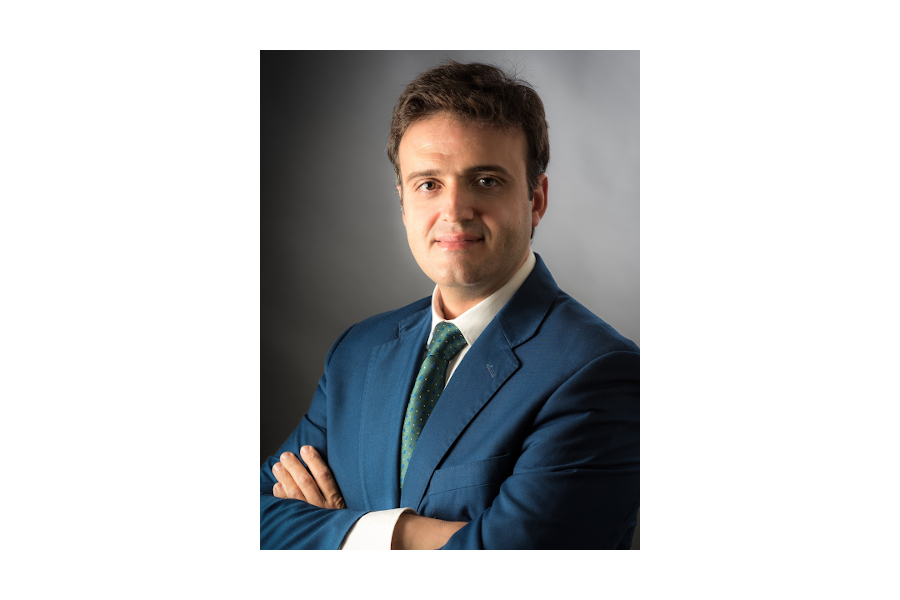Digitalisation to drive efficiency in water sector

Julio de la Rosa, Middle East Director for ACCIONA's Agua business division, spoke to Energy & Utilities about the impact of Covid-19 on ACCIONA's operations and also about the key themes and trends in the region's growing water sector
While the Covid-19 pandemic has led to numerous delays and postponements in planned investments and projects across the Middle East, the water sector is one of a few exceptions. With the supply of water vital for human life and major industries, the development of key projects have remained a key priority for the governments and utilities.
Spain’s ACCIONA is one of the firms driving the development of water infrastructure across the region. In September, the firm achieved a key milestone in the construction of the Al-Khobar 1 desalination project in the eastern province of Saudi Arabia when it produced the first cubic metre of water. The seawater reverse osmosis (SWRO) project being built for the Saline Water Conversion Corporation (SWCC) is due to be completed by the end of 2020.
In April, the Spanish firm was awarded a contract to develop the 600,000 cubic metre a day (cm/d) Al-Khobar 2 desalination plant.
“Covid-19 is nothing any of us had expected or planned for, but we have managed to accommodate,” says Julio de la Rosa, ACCIONA Middle East Director for the Agua business division. “We are executing projects in the UAE, Saudi Arabia and Qatar currently, and we are managing to deliver these as planned.”
“It has required flexibility from us and the clients about the situation we are all facing, which was essential,” says De la Rosa. “And the incorporation of new technologies, mainly in the supply chain, was critical to ensure that deliveries were received and projects could continue.”
New solutions
De la Rosa says that changing the way materials were procured and delivered was one of the first changes that was critical to allow progress to continue with major projects.
“Adopting new technologies for the supply chain, from purchase order to delivery, used to require human involvement but deeper integration of technology has allowed us to operate within a safe environment and be aware of potential delays as soon as they happen,” he says. “And this allows us to take action to remove or reduce this delay.”
While the pandemic has led to the rationalisation of many business and industrial activities regarded as non-essential, De la Rosa says the opposite impact has been felt in the water sector.
“An important legacy of Covid-19 is that it has made governments and people aware of the importance of water during a crisis or pandemic, it is essential.”
And not only potable water, but also sanitation and wastewater infrastructure are really important to minimise the spread of the virus. Analysis of sewage has played a key role in tracking the evolution of the coronavirus within the population.”
Private sector growth
A shift that was well underway before the pandemic was the move towards the public-private partnership (PPP) model for developing water projects in the region.
While water projects have been developed as part of cogeneration projects with large power plants, under the independent water and power producer (IWPP) model, several the region’s utilities are now pushing ahead with standalone desalination projects as independent water projects (IWP). Saudi Arabia is also pursuing a major programme to develop wastewater treatment plants through PPP structures.
“The predominant and standard model for water projects is now public-private partnership [PPP],” says De la Rosa. “There is a healthy pipeline of PPP projects for desalination and wastewater treatment plants across the GCC, particularly in Saudi Arabia, UAE and Qatar.”
In January 2019, ACCIONA, in partnership with Japan’s Marubeni Corporation and the local Abdul Latif Jameel, was awarded a the contract to develop the 450,000 Shuqaiq 3 IWP.
The Shuqaiq 3 IWP project will be fitted with a photovoltaic (PV) solar plant to reduce the carbon footprint of the plant.
According to De la Rosa, the shift towards the private developer model for water infrastructure is increasing value for utilities and will lead to significant cost savings in the long term.
“PPP is increasing value for the whole life of the projects, not just appointing an EPC [ engineering, procurement and construction] contractor for the lowest cost. Implementing PPP will increase the lifetime value of an asset, and even the opportunity to improve the asset over a period of 25 years or more.”
“While PPP will remain the predominant model from now on, I think we will still see some EPC projects,” says De la Rosa. “For a client, they have more power to approach the contractor for a change with less bureaucracy – which can be an advantage for them. I hope to see PPP continue as the main structure [for water projects], but also some EPC projects too.”
Record tariffs
The increasing prevalence of the IWP model has enabled utilities to achieve world record low tariffs from bidders.
“In the last year and a half, water tariffs in the region have dropped by 35 per cent – and this is due to a few factors,” says De la Rosa.
“The scale of the plants is one of the main reasons why tariffs have fallen to such a degree. The plants being tendered now are between 400,000 cubic metres a day [cm/d] and 1 million cm/d, “says De La Rosa. “A plant of 300,000 cm/d is now considered small, when two years ago this would have been considered a monster!”
“The economy of scale is playing a big part in the reduction of tariffs, as has the incorporation of renewable energy into projects.”
While De la Rosa expects renewable energy to play an increasingly important part in the development of desalination plants moving forward, he expects to see a change to how solar energy is incorporated into water projects.
“I see PV solar as remaining incorporated to water projects, but I believe it will be in a more efficient way.”
“At the moment when we are tendering for a water treatment plant or IWP and start implementing technologies to get a very low tariff, the amount of resources that we are starting to dedicate to the PV portion compared to the desalination portion of the plant is the same,” he says. “I have to doubt whether the most efficient way to allocate resources is on how to get the most MW on a rooftop of a water plant next to the sea, particularly where there is not constraints on land available for PV installations.”
“I think that the fall in tariffs will continue, but I hope for the long-term sustainability of the market it does in a realistic way. I hope to see a lot of improvement in the level of water produced itself as the main driver behind increased tariffs and not other criteria.”
State asset sales
While the shift towards private sector ownership of new greenfield water infrastructure is well underway, the region’s largest water market Saudi Arabia is planning to divest existing brownfield desalination plants to the private sector as part of its economic reform programme. Others, such as Kuwait, are hoping to follow.
De la Rosa says that buying state assets would only be appropriate for ACCIONA under the right conditions.
“For us to be interested in existing assets we need to be comfortable that the client will allow investors to perform a proper due diligence with enough time and information to allow private parties to do a comprehensive and detailed assessment of how the asset was performing in previous years and what is the expected future performance of the asset. We need to know what improvements of asset may be required to make it more efficient and environmentally sustainable.”
“We also need to know about the transition from the current operator – how this will happen what exactly we would be taking over following the sale,” he adds.
Water reuse
As countries across the Middle East seek to develop new plants to desalinate water to meet growing demand, De la Rosa says that treating sewage water can significantly boost supplies for industrial and agricultural purposes.
“There is a lot of potential for TSE reuse,” says De la Rosa. “The technology is there, but we need the right legal framework.”
“The first step is we need to break the myth that reusing sewage is something dangerous,” he says. “The current technology allows us to make sewage after treatment as safe as potable water with the right investment, but we need the definition of the technology and level of treatment for each use and a legal framework underpinning this.”
Reducing non-revenue water and leakages, for both potable and sewage, is something that De la Rosa feels needs to be addressed for water infrastructure across the region.
“An improvement in reducing non-revenue water and addressing leakages in infrastructure will be a key target for utilities in 2021.” “A lot of water is being generated, but much of it is being lost before it reaches the end user. In the wastewater sector, leakages in the networks is also something that needs to be addressed and invested in.”
Digital technologies
The development of reverse osmosis (RO) membrane technology and more recently the incorporation of renewables into desalination plants have had a significant impact on reducing the cost of water and energy expended in the production process. De la Rosa says that increasing the development of digital technologies in the water sector will provide some of the most important cost and energy savings in the future.
“The development of digital technologies allows you to design and maintain an accurate algorithm to predict how water plant and the supply will operate in advance, and this will allow you to design and operate the facility in the optimum way,” he says
De la Rosa cites artificial intelligence (AI) and cloud platforms as an example of technologies which ACCIONA is employing to improve the efficiency and operation of water infrastructure.
“In Acciona we have a cloud platform, named BIONS, a new intelligent cloud-based data platform that integrates data to improve the efficiency of water supply management systems. This next-generation platform provides an in-depth vision of the water supply service in real time, for an overall view of the health of the network.”
De la Rosa says that the platform with a graphic and mobile interface displays all of the data of the network in real time.
“Thanks to Artificial Intelligence and Machine Learning technologies, BIONS is able to not only detect, analyse and manage failures or incidents in the water supply network such as leaks, breaks or faulty assets –it can also predict when they are likely to happen.”
“All of the data collected is centralised in Acciona’s water control centre. This helps to design more efficient and sustainable water plants in the future.”
Energy & Utilities - Middle East and Africa Market Outlook Report 2024.
This must-have report for industry players offers a thorough understanding of the latest developments, challenges, and opportunities in the region, supported by data, analysis, and expert insights.








